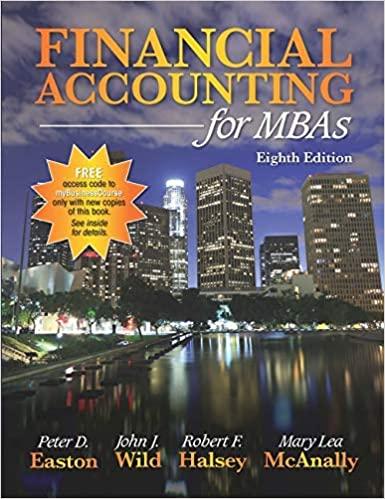Question
The manufacturers of silicone for breast implants have two production departments; refining and assembly. The production process depicts that assembly is labour intensive while refining
The manufacturers of silicone for breast implants have two production departments; refining and assembly. The production process depicts that assembly is labour intensive while refining is highly machine intensive. The company also has two service cost centres: stores and maintenance. Both service departments provide support to each other. During the period, the following allocated overheads were recorded: Allocated Refining Assembly Maintenance Stores Indirect Material $7,000,000 $4,000,000 $1,000,000 $4,000,000 Indirect labour $5,500,000 $6,000,000 $3,000,000 $2,500,000 Additional data has been provided as it relates to overheads incurred during the period: Budgeted Overheads Heat and lighting $4,000,000 Rent and rates $3,000,000 Plant/ machine insurance $2,500,000 Power $5,000,000 Plant/ machine depreciation $1,500,000 The following basis below were presented by the production manager who thinks it is appropriate to apportion power based on kilowatt hours (KWH), rent and rates based on floor area, while maintenance costs are to be re-apportioned based on maintenance hours: Basis Refining Assembly Maintenance Stores Floor area (m2) 800 600 400 200 Plant/ machine values $9,000,000 $6,000,000 $3,000,000 $2,000,000 Maintenance hours 12,000 10,000 --- 3,000 KWH 800 700 200 300 Number of requisitions 750 450 300 --- Machine hours 40,000 10,000 Labour hours 20,000 30,000 The average cost of raw material for this product is $2,550 per silicone and the average direct labour rate as $60 per hour. The following per unit date is related to the silicone: labour hours is 10 and machine hours is 12. Note: the most suitable basis should be chosen as marks will be awarded only for choosing the most suitable basis. At the end of the period, actual overheads in the refining and assembly departments were $20,500,000 and $14,000,000 respectively, while actual activity levels were 47,000 and 11,000 machine hours and 18,400 and 18,900 direct labour hours respectively. Required: (a) Prepare an overhead cost analysis sheet (including a column for the total). (20 marks) (b) Calculate the Overhead absorption rates (OARs) using the simultaneous equation method to reapportion costs. (5 marks) (c) Calculate the total cost of one silicone implant. (3 marks) Calculate the overhead absorbed for each department. (2 marks) Answer text The manufacturers of silicone for breast implants have two production departments; refining and assembly. The production process depicts that assembly is labour intensive while refining is highly machine intensive. The company also has two service cost centres: stores and maintenance. Both service departments provide support to each other. During the period, the following allocated overheads were recorded: Allocated Refining Assembly Maintenance Stores Indirect Material $7,000,000 $4,000,000 $1,000,000 $4,000,000 Indirect labour $5,500,000 $6,000,000 $3,000,000 $2,500,000 Additional data has been provided as it relates to overheads incurred during the period: Budgeted Overheads Heat and lighting $4,000,000 Rent and rates $3,000,000 Plant/ machine insurance $2,500,000 Power $5,000,000 Plant/ machine depreciation $1,500,000 The following basis below were presented by the production manager who thinks it is appropriate to apportion power based on kilowatt hours (KWH), rent and rates based on floor area, while maintenance costs are to be re-apportioned based on maintenance hours: Basis Refining Assembly Maintenance Stores Floor area (m2) 800 600 400 200 Plant/ machine values $9,000,000 $6,000,000 $3,000,000 $2,000,000 Maintenance hours 12,000 10,000 --- 3,000 KWH 800 700 200 300 Number of requisitions 750 450 300 --- Machine hours 40,000 10,000 Labour hours 20,000 30,000 The average cost of raw material for this product is $2,550 per silicone and the average direct labour rate as $60 per hour. The following per unit date is related to the silicone: labour hours is 10 and machine hours is 12. Note: the most suitable basis should be chosen as marks will be awarded only for choosing the most suitable basis. At the end of the period, actual overheads in the refining and assembly departments were $20,500,000 and $14,000,000 respectively, while actual activity levels were 47,000 and 11,000 machine hours and 18,400 and 18,900 direct labour hours respectively. Required: (a) Prepare an overhead cost analysis sheet (including a column for the total). (20 marks) (b) Calculate the Overhead absorption rates (OARs) using the simultaneous equation method to reapportion costs. (5 marks) (c) Calculate the total cost of one silicone implant. (3 marks) Calculate the overhead absorbed for each department. (2 marks) Answer text
Step by Step Solution
There are 3 Steps involved in it
Step: 1

Get Instant Access to Expert-Tailored Solutions
See step-by-step solutions with expert insights and AI powered tools for academic success
Step: 2

Step: 3

Ace Your Homework with AI
Get the answers you need in no time with our AI-driven, step-by-step assistance
Get Started


